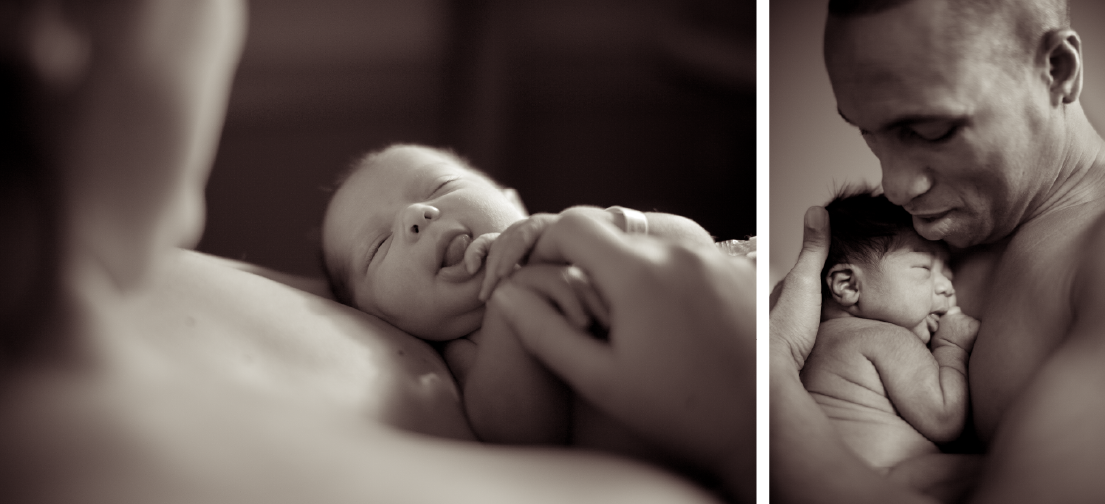The St. Paul’s Hospital Pregnancy, Birthing and Newborn Centre is home to a level 2A Neonatal Intensive Care Unit (NICU). That means we can support babies born at 32 weeks or later or babies who require close monitoring or medical intervention after birth.
Babies who require more acute medical support are stabilized at St. Paul’s Hospital and then transferred to a higher-level care NICU by the BC Infant Transport Team. Locally, this might be BC Women’s Hospital + Health Centre or Royal Columbian Hospital. We collaborate with hospitals around the province to prioritize keeping families together and to provide the best care to high-risk pregnant people and their infants.
“We felt so well supported by the staff in the NICU. They gave us so much information about how to care for our baby and what to expect when we get home. Everyone was tremendous in their compassion and their skill.” Learn more about how the team supports parents with a baby in the NICU.
What to expect if your baby is in the NICU
The NICU has nine cribs in an open nursery format. Each baby has a designated family zone within the large room.
Your baby will likely be surrounded by several pieces of equipment. It might be scary to see wires and tubes attached to your baby. Rest assured, all these tools have an important role to play in ensuring your baby grows and thrives. Some of the most common pieces of equipment are:
- A cardio-respiratory monitor to track heart rate and breathing rate
- An oximeter to monitor how much oxygen is in the blood. It is usually attached to the foot or hand.
- An incubator, an enclosed Plexiglas bed that provides a regulated environment.
- A ventilator, a machine with a face mask attached that helps your baby breathe.
- A feeding tube in your baby’s nose to send food right to their stomach until they can safely breast or bottle feed.
- An intravenous (IV) catheter inserted in a vein which is used to deliver fluid or medicine directly to your baby’s bloodstream.
Your baby’s care team
The NICU has a team of specialists to care for your baby. Led by a pediatrician and nurses trained in neonatal care, your baby’s care team may also include respiratory therapists, lactation consultants and social workers. As St. Paul’s Hospital is a teaching hospital, medical students and residents might also be involved in your baby’s care.
You are an integral member of your baby’s care team. As a partner in care, you will be involved in decisions throughout your baby’s stay. You are encouraged to provide hands-on care, for example, change your baby’s diapers, check their temperature and take them in and out of their crib.
Your pediatrician will determine when your baby is ready to leave the NICU, and other members of the care team will help prepare you to take your baby home. They will organize follow-up visits or community care after discharge as needed.
Kangaroo care
Kangaroo care, also known as skin-to-skin, involves holding your baby on your bare chest in an upright position with the baby only wearing a diaper. Holding your baby in kangaroo care is one of the best things you can do to help your baby in the NICU, and this practice is encouraged and supported. You, or other family members you identify, can provide kangaroo care to your baby.
Kangaroo care offers many benefits to you and your baby:
- Improves the attachment and communication between you and your baby.
- Increases your confidence and emotional well-being.
- Sets you up for more successful infant feeding.
- Improves your baby’s physiological stability.
- Helps your baby’s brain growth and development.
- Reduces your baby’s stress and procedural pain (e.g. if they need to have bloodwork).
All babies can benefit from skin-to-skin, whether they are premature or full-term babies.

Visitors to the NICU
You and your partner (or designated caregiver) are allowed unrestricted visits to your baby, and we encourage you to spend as much time with your baby as possible.
The number of people welcomed at the bedside will be determined with the parents to meet the needs of the infant, family and NICU. The baby’s siblings are the only children allowed into the nursery. All visitors must be accompanied by a parent of the baby and self-screen for symptoms of illness or communicable disease exposure.